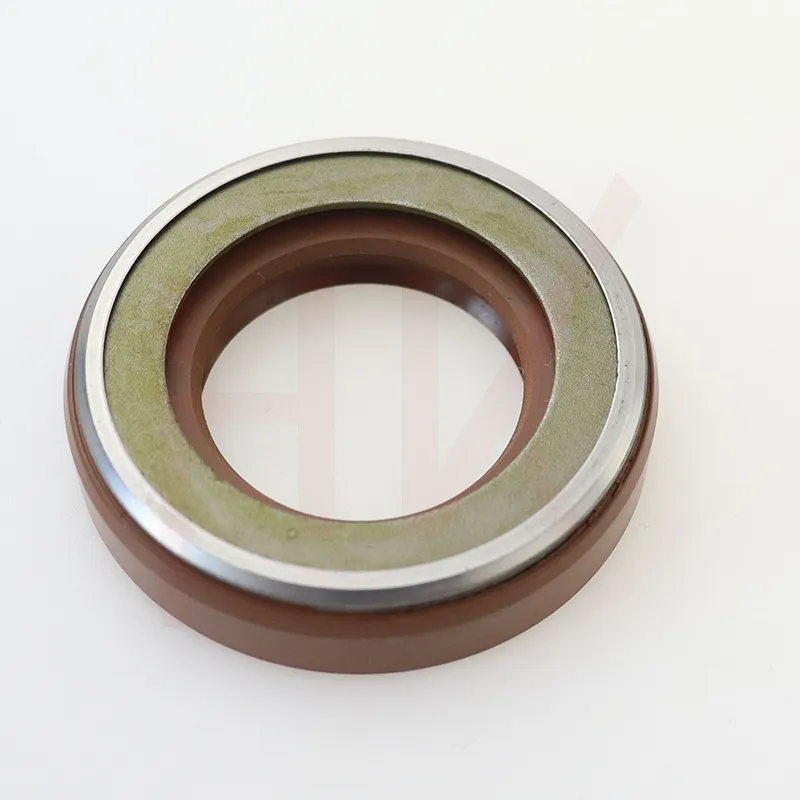Nov . 12, 2024 21:36 Back to list
single acting piston seal
Understanding Single Acting Piston Seals Design and Applications
Single acting piston seals play a critical role in various hydraulic and pneumatic systems, serving as fundamental components that ensure efficiency and reliability in fluid power applications. These seals are designed to prevent fluid leakage, maintain pressure, and provide effective operation for single-acting cylinders, where pressure is applied in one direction and the return motion is typically facilitated by an external force, such as gravity or a spring.
Design Characteristics
The primary function of a single acting piston seal is to create a tight seal between the piston rod and the cylinder wall. This is essential for preventing the escape of hydraulic or pneumatic fluid during operation. The design of these seals is often influenced by the type of system they are used in, the nature of the fluid, and the operating conditions, including temperature, pressure, and speed.
Single acting piston seals are available in various materials, including elastomers (such as nitrile, fluorocarbon, or polyurethane) and thermoplastics. The choice of material reflects the specific requirements of the application, particularly concerning chemical compatibility and thermal stability. For instance, fluorocarbon seals offer excellent resistance to high temperatures and aggressive chemicals, making them ideal for demanding industrial environments.
Working Principle
In a single acting system, the piston moves in one direction when pressurized fluid is introduced from one side. The seal, mounted on the piston, compresses against the cylinder wall, creating a barrier that prevents fluid from leaking out of the chamber. When the pressure is released, the piston returns to its original position, often aided by a spring mechanism or gravity.
single acting piston seal

The design of single acting piston seals must accommodate the pressure differentials and the movement of the piston. They are designed to endure wear and tear while still providing effective sealing. The contour of the seal and the tolerance between the piston and cylinder will influence the overall performance. If the clearance is too great, it can lead to leakage; if too tight, it can cause excessive friction and premature wear.
Applications
Single acting piston seals are found in a wide array of applications across multiple industries. In hydraulic systems, they are commonly used in lifts, presses, and agricultural equipment, where reliable operation is crucial. In pneumatic systems, they are employed in air compressors and actuators, providing a dependable solution for controlling airflow.
In the automotive industry, single acting piston seals are pivotal in applications such as shock absorbers and hydraulic brakes. Here, they ensure that fluid remains contained under high pressure, contributing to safety and performance. Furthermore, in the field of robotics, they form an integral part of pneumatic actuators, enabling precise control over movement.
Challenges and Considerations
While single acting piston seals are efficient, they are not without challenges. Issues such as seal wear, hardening, or swelling can arise due to prolonged exposure to chemicals, extreme temperatures, or inadequate lubrication. Regular maintenance and inspection are crucial to mitigate these challenges and ensure longevity.
In conclusion, single acting piston seals are essential components in a variety of mechanical systems. Their design, functionality, and material selection play significant roles in the overall performance and efficiency of hydraulic and pneumatic applications. Understanding their characteristics and applications allows engineers and technicians to make informed decisions that enhance system reliability and effectiveness. As technology evolves, advancements in sealing materials and designs will continue to improve the performance of these seals, paving the way for more efficient and reliable systems.
-
TCN Oil Seal Metal Ring Reinforcement for Heavy Machinery
NewsJul.25,2025
-
Rotary Lip Seal Spring-Loaded Design for High-Speed Applications
NewsJul.25,2025
-
Hydraulic Cylinder Seals Polyurethane Material for High-Impact Jobs
NewsJul.25,2025
-
High Pressure Oil Seal Polyurethane Coating Wear Resistance
NewsJul.25,2025
-
Dust Proof Seal Double Lip Design for Construction Equipment
NewsJul.25,2025
-
Hub Seal Polyurethane Wear Resistance in Agricultural Vehicles
NewsJul.25,2025
-
The Trans-formative Journey of Wheel Hub Oil Seals
NewsJun.06,2025
Products categories
















